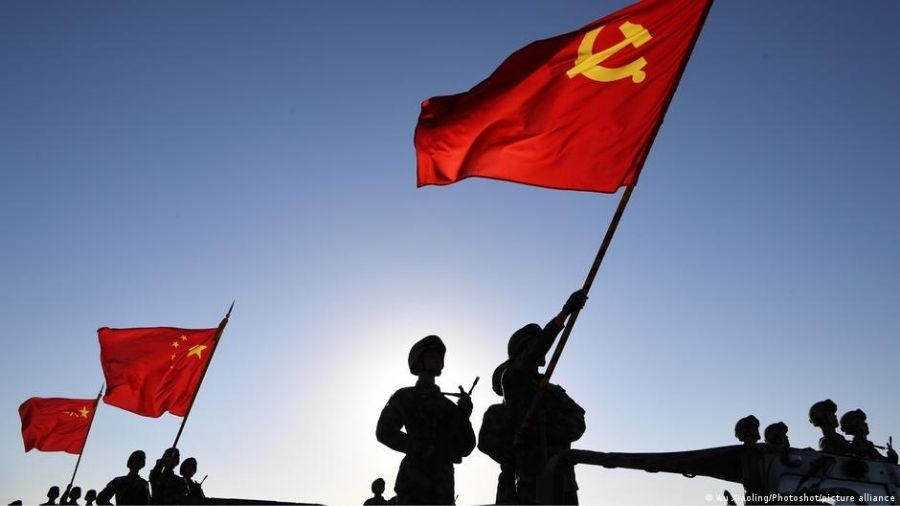A day after Nancy Pelosi, the speaker of the U.S. House of Representatives, visited Taiwan, celebrating it as a bulwark of democracy, the island faces three days of military exercises during which China’s forces may press closer than ever, flexing and honing their abilities to blockade it.
A barrage of Chinese propaganda said the drills, scheduled to start at midday Thursday, would serve as punishment for Pelosi’s visit, and as a shock-and-awe deterrent against opponents of Beijing’s claims to the self-ruled island. But more than that, the six exercise zones that the People’s Liberation Army has marked out in seas off Taiwan — one nudging less than 10 miles off its southern coast — could give Chinese forces valuable practice, should they one day be ordered to encircle and attack the island.
“They’re definitely going to use this as an excuse to do something that helps them prepare for a possible invasion,” said Oriana Skylar Mastro, a fellow at the Freeman Spogli Institute for International Studies at Stanford University, who studies China’s military and its potential to attack Taiwan.
“It’s not just about the messaging,” she said. “Under the guise of signaling, they’re trying to basically test their ability to conduct complex maneuvers that are necessary for an amphibious assault on Taiwan.”
China’s leader, Xi Jinping, has said that he hopes to secure eventual unification with Taiwan through peaceful steps. But like his predecessors, he has not ruled out force, and China’s military buildup has reached a point where some military commanders and analysts think an invasion is an increasingly plausible, though still highly risky, scenario.
“I wouldn’t underestimate President Xi’s determination to assert China’s control” over Taiwan, William J. Burns, the director of the CIA, told the Aspen Security Forum last month. “I think he’s determined to ensure that his military has the capability to undertake such an action, should he decide to move in that direction. I think the risks of that become higher, it seems to us, the further into this decade that you get.”
It remains unclear how close Chinese forces will come to Taiwan during the exercises. In one possible sign of what to expect, China’s Liberation Army Daily said on Thursday that the Eastern Theater Command was holding its own practice operations that included the navy, air force and rocket force, and were focused on “joint enclosure and control,” assaults on sea and land, and air domination operations. Kinmen Island, a Taiwanese-controlled island a little over 6 miles off China’s coast, reported that on Wednesday night, flying objects of unclear origin — probably drones — flew overhead.
China is trying to reinforce its influence over Taiwan by upgrading deterrence after the visit by Pelosi, who praised the island’s people for standing strong against Beijing, several Chinese analysts said.
“The tendency of external forces exploiting Taiwan to contain China has become increasingly clear,” Wu Yongping, a professor at Tsinghua University in Beijing who studies Taiwan, said in written answers to questions. “The Chinese government has adopted some unprecedented military operations in response to this.”
One of the People’s Liberation Army’s designated exercise zones lies off the eastern coast of Taiwan, at the farthest point from the Chinese mainland. When China held intimidating military exercises off Taiwan during a geopolitical crisis 25 years ago, the People’s Liberation Army, or PLA, did not go that far.
“It’s an intentional message meant to highlight the PLA’s heightened capacity to project power farther from the Chinese mainland, and it’s a visible signal that China can surround the island,” said Brian Hart, a fellow with the China Power Project at the Center for Strategic and International Studies. “It will also complicate traffic to and around the island from all sides.”
Global Times, a swaggeringly nationalist Chinese newspaper, raised the possibility of missiles being fired from the mainland into that eastern zone, arcing over Taiwan. “If the Taiwan military responds, the Liberation Army is entirely able to trap the turtle in the jar,” one Chinese commentator, Zhang Xuefeng, told the paper, using a Chinese saying for catching prey with ease.
But Hart said China was unlikely to fire missiles over Taiwan. “That would be extremely escalatory,” he said. “They will more likely fire ship-based or air-launched missiles into that area without flying missiles over the island.”
The New York Times News Service










